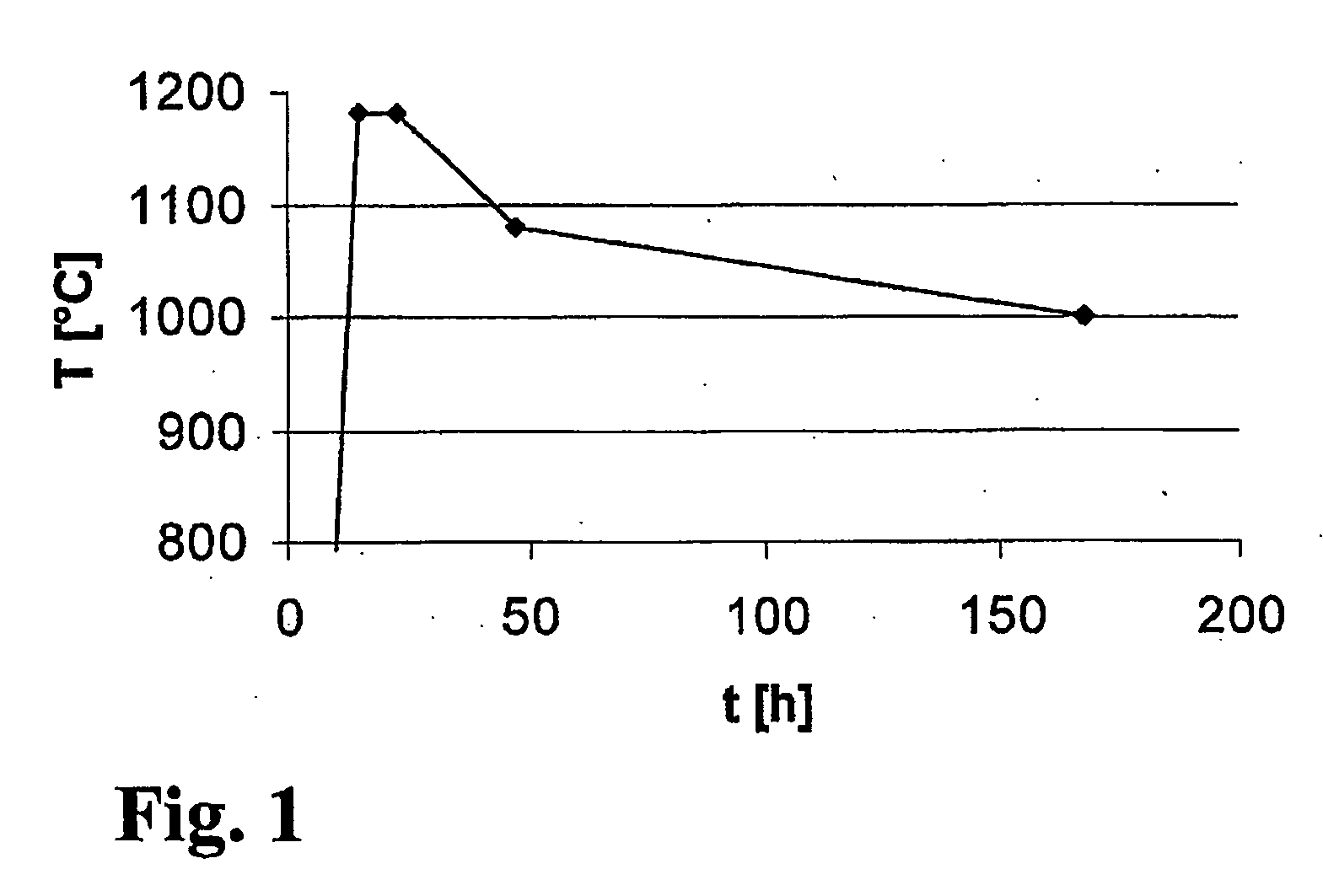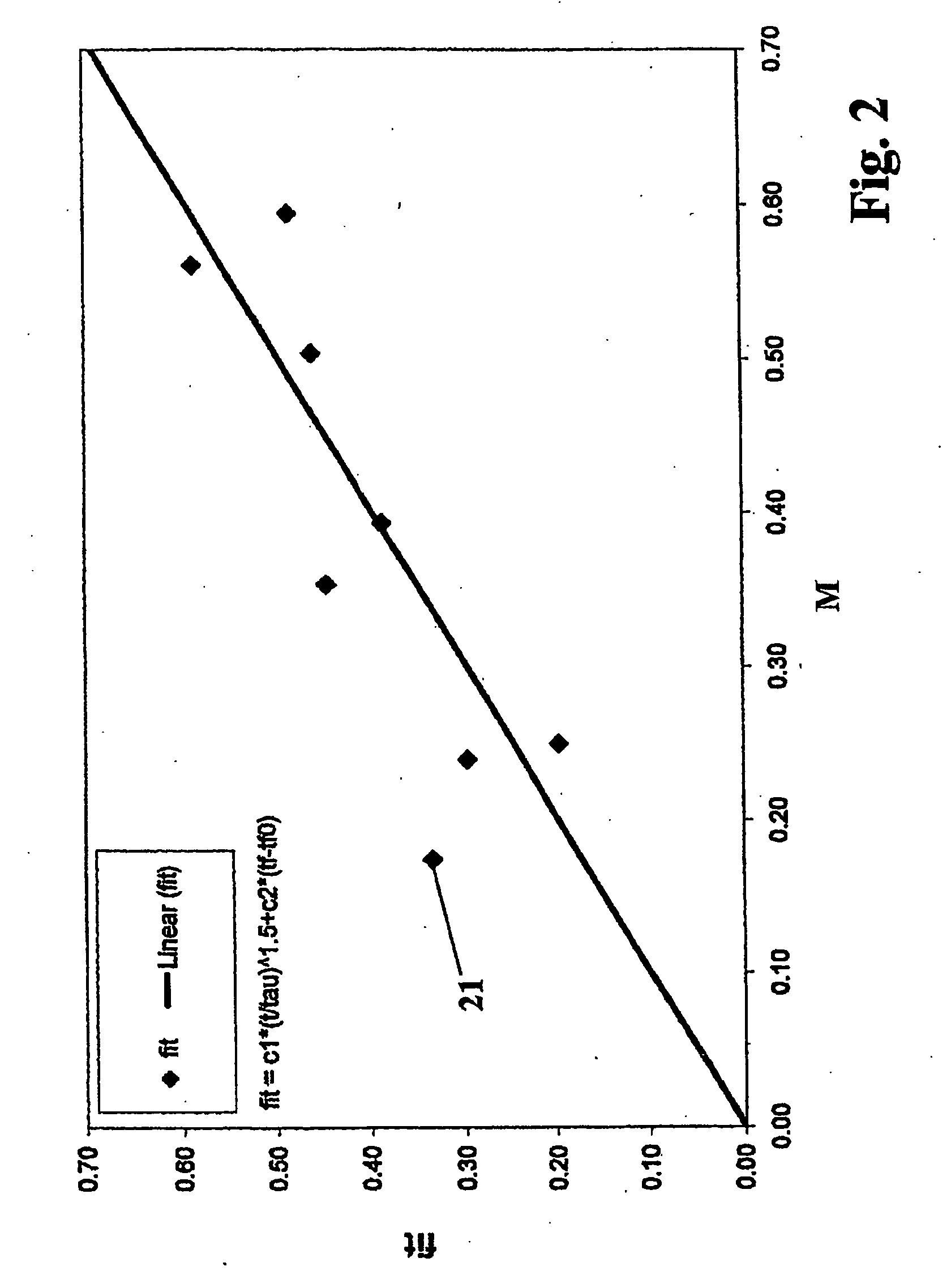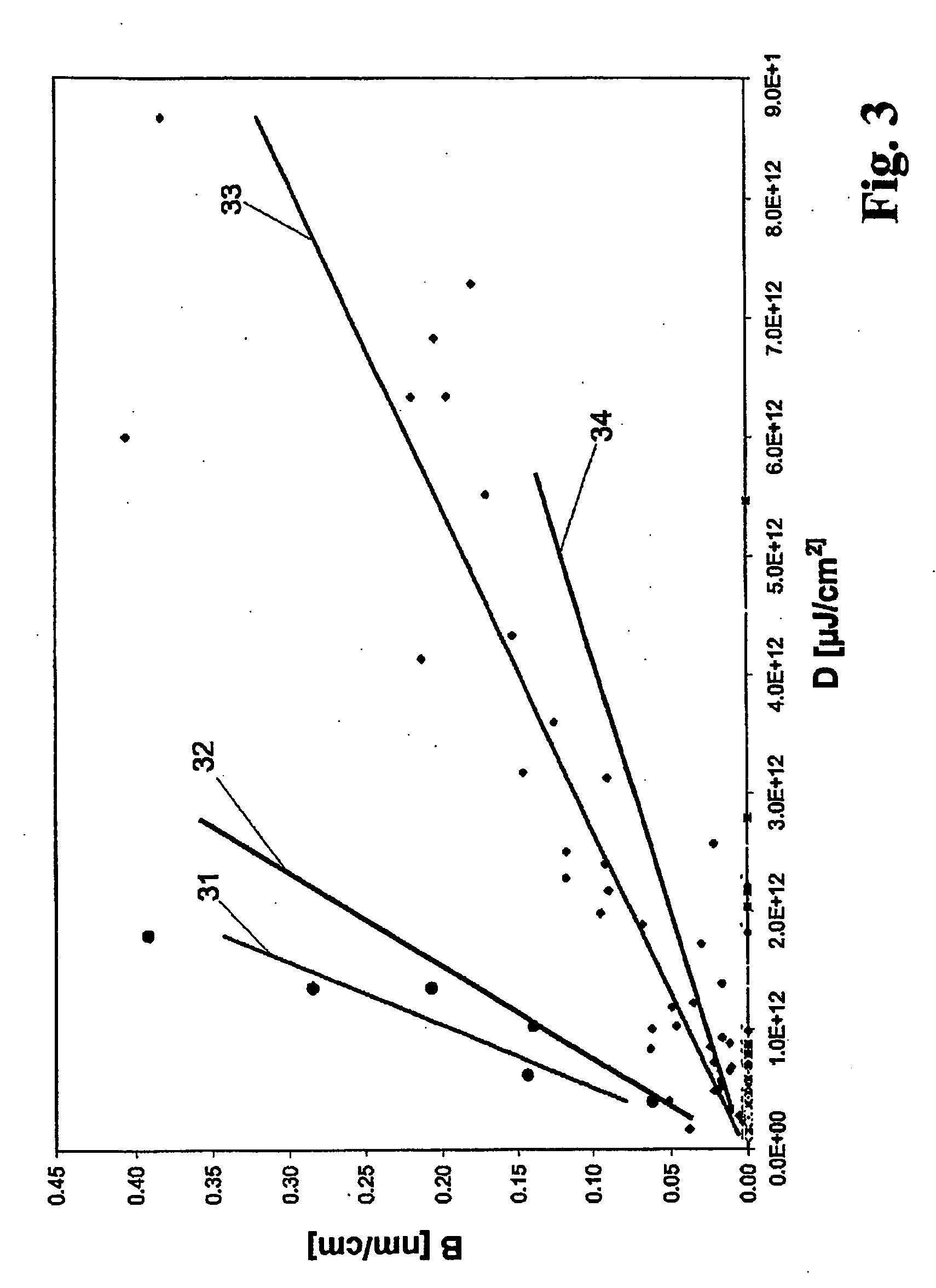Method for producing an optical component of synthetic quartz glass with enhanced radiation resistance, and blank for producing the component
a technology of radiation resistance and optical component, which is applied in the direction of glass making apparatus, glass shaping apparatus, inorganic chemistry, etc., can solve the problems of deterioration of imaging performance, rise in refractive index, and deterioration of imaging properties of optical components
- Summary
- Abstract
- Description
- Claims
- Application Information
AI Technical Summary
Benefits of technology
Problems solved by technology
Method used
Image
Examples
Embodiment Construction
[0001]The present invention relates to a method for producing an optical component of synthetic quartz glass with enhanced radiation resistance for use in a microlithographic device at an operating wavelength below 250 nm, with a quartz glass blank being provided and subjected to a multi-stage annealing treatment.
[0002]Furthermore, the present invention relates to a blank for producing an optical component for use in a microlithographic device, particularly for immersion lithography, at an operating wavelength below 250 nm.
PRIOR ART
[0003]Optical components of quartz glass are used for transmitting high-energy ultraviolet laser radiation in microlithographic exposure and projection systems for producing large-scale integrated circuits on substrates. Modern microlithographic projection systems operate with excimer lasers emitting high-energy pulsed UV radiation of a wavelength of 248 nm (KrF laser) or of 193 nm (ArF laser). The general demand is here made that a light distribution pro...
PUM
| Property | Measurement | Unit |
|---|---|---|
| temperature | aaaaa | aaaaa |
| temperature | aaaaa | aaaaa |
| fictive temperature | aaaaa | aaaaa |
Abstract
Description
Claims
Application Information
 Login to View More
Login to View More - R&D
- Intellectual Property
- Life Sciences
- Materials
- Tech Scout
- Unparalleled Data Quality
- Higher Quality Content
- 60% Fewer Hallucinations
Browse by: Latest US Patents, China's latest patents, Technical Efficacy Thesaurus, Application Domain, Technology Topic, Popular Technical Reports.
© 2025 PatSnap. All rights reserved.Legal|Privacy policy|Modern Slavery Act Transparency Statement|Sitemap|About US| Contact US: help@patsnap.com



